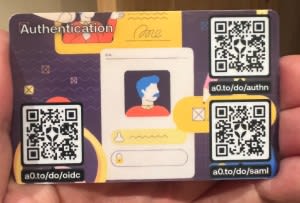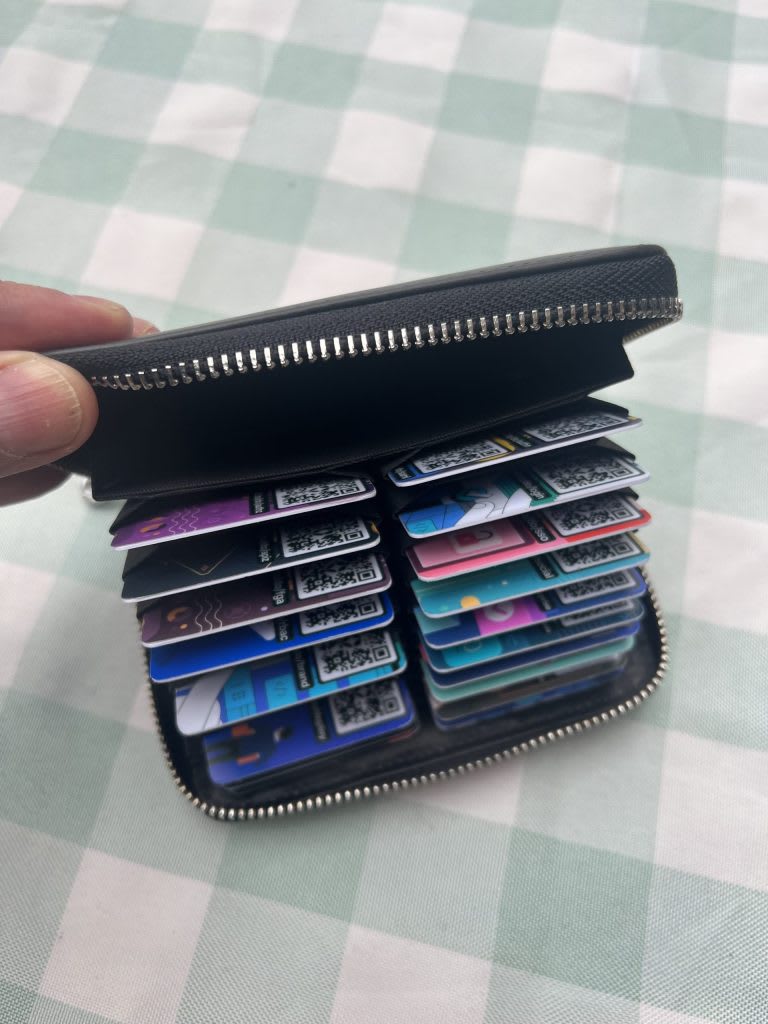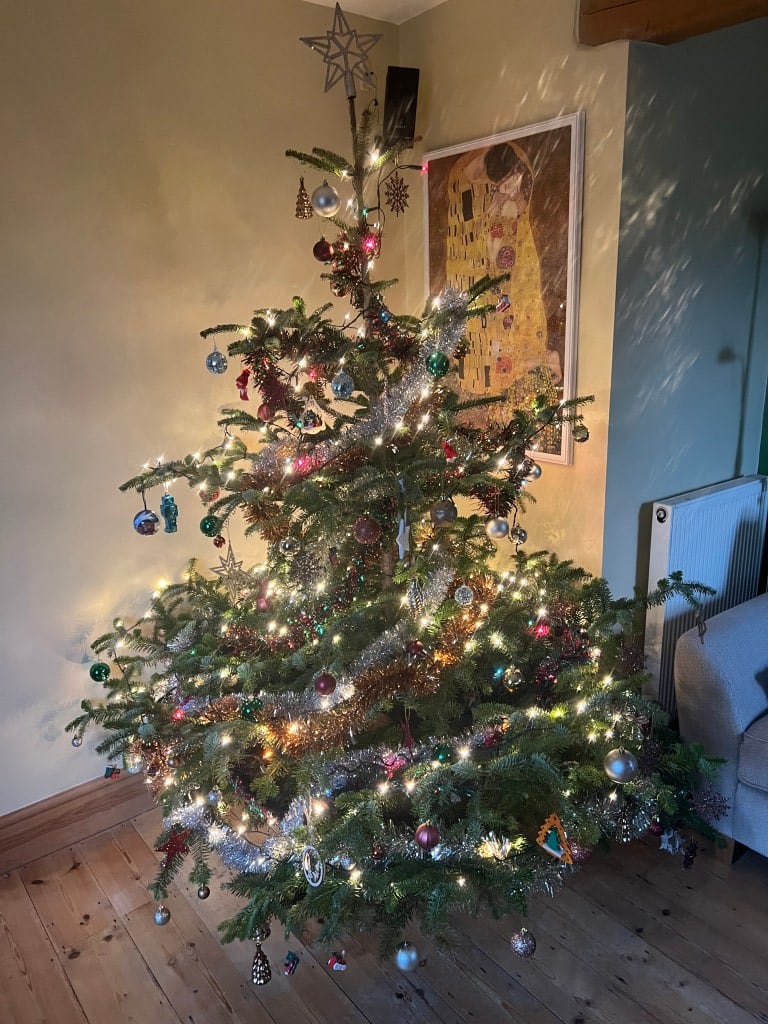Happy New Year! Welcome to 2024!! 🎉 I’m never really quite sure what the etiquette is regarding wishing people a Happy New Year – particularly, when to stop doing it! 😂 As the year is still very much in it’s infancy, I feel I’m currently on safe ground here. But if I’m still wishing you a Happy New Year in a few weeks time, you certainly have my permission to call me out on it! 😉
Talking of infancy, I realised today that Discovery Kit is almost one month old! 🎂 Well, when I say almost one month old, I guess I mean it’s almost one month since it had it’s inaugural outing at React Day Berlin, and was “publically born” so to speak 😎 In CIAM Discovery Kit (Part 1) I introduced Discovery Kit, and in CIAM Discovery Kit (Part 2) I shared a little about my trials and tribulations during my experiments in decorating each NFC card with the artwork intended to deliver that “surprise” and “delight” experience at a booth. Here in Part 3, I’m going to turn my attention to talking more about the way I’m combining NFC and QR Codes, and the range of experiences that enables me to deliver.
To NFC or not to NFC? That was the question!
If you’re ever read My Journey of Discovery, you’ll know I’m a bit of a amateur thespian: Acting, Directing, or generally working backstage at my local theatre is quite often where I spend my “off” time. So I guess it’s not too surprising that I entitled this section based on a well known line from a Shakespear play 😂 Or at least some word-play variation along its lines 😉 But it is relevant. Why did I choose to use QR codes and NFC? What was the rationale behind that?
I knew I wanted Discovery Kit to be topic oriented and, as the intention was primarily to deliver a booth-related experience, I knew I wanted to create something tactile too: folks who come to a booth love the opportunity to pick things up and play with them 😎 So something colorful and eyecatching would fit the bill: helping to provide that “surprise” and “delight” element too. With my preference for reusing existing collateral – particularly when it comes to “colorful” and “eyecatching”; I’m really very far from being an artist 😳😂 – I was naturally drawn towards the idea of repurposing the Hero artwork as I described in Part 2. Logically then, the use of cards – something like playing cards or trading cards, which are often colorfully adorned – seemed appropriate. Cards also give the idea of something “collectable” – which in turn leads to possible opportunities for gamification, etc.
Throughout the latter half of 2023, my team did a lot of work with QR Codes. QR coding provides an easy way to access web based resources: a URL can be encoded in a QR Code, which can easily be scanned by a (personal) mobile device to provide access to a web page. As the objective of Discovery Kit is to enable visitors at our booth to easily access Discovery Content from a personal device, at scale, the use of QR Codes was something of a no-brainer.
QR Codes – even Dynamic QR Codes, where the encoded URL redirects to a second URL that can be changed on demand – are still essentially fixed quantities: once a QR Code is printed it cannot be changed! As a Developer Advocate at Auth0, I attended a lot of different events where different technologies are the main focus; some events focus on React development, whilst others focus on Python, Swift, .NET, Java and the like. Unless I intended to create multiple variants of each topic related card, I was going to have a hard time delivering any technology specific Discovery content using QR Codes. For instance, Auth0 provides a lot of SDKs, which are by their very nature inherently technology stack specific, and wven with Dynamic QR Codes it could easily get tricky. What if my Developer Advocate colleagues used Discovery Kit at the same time as me? Or what if Discovery Kit was used by someone for another Auth0 team, at the same time as any of us? Changing a Dynamic QR Code URL would change it for everyone as each Advocate, et al, would have the same copy of Discovery Kit. 🤔 There had to be a better alternative.
In a nutshell then, that’s how I came up with the notion of using NFC as well 😎 As it turned out it was a decision that would effectively address two aspects at once: I had cards on which I could print things, and I had a means to allow anyone with a copy of Discovery Kit to deliver technology specific URLs, dynamically, without affecting anyone else that was using it at the same time! Also, folks tend to find NFC novel, so the use of it adds to the “surprise” and “delight” element too 👍
NFC Cards are not all equal!
Did you know that there are a number of different types of NFC Cards? Well, I guess it’s more accurate to say there are a number of different types of NFC Chip. And not all of them work with all devices! That certainly came as news to me! 😳 Wak Dev – producers of the excellent NFC Tools – have a really useful knowledge-base article here, which lists the various NFC Chips and their degrees of compatibility.
If you recall from Part 2, I described one of my early encounters with NFC: the Mifare Cards produced by NXP. Mifare Classic chips are fairly low cost, even for the 4K ones. A lot of storage for relatively few 💵’s! Trouble is, they are only partially compatible across devices…read they don’t typically work out-of-the-box iPhones 🤦🏻♂️ They do typically work fine with Android phones, but that’s because NXP provide the software stack for Android devices, and include support for Mifare; Mifare format, it transpires, is not part of the NFC standard spec. I only discovered this after I’d placed an initial order of 50; fortunately it didn’t cost too much, but hopefully knowing this beforehand might prevent you, dear reader, from making a similar mistake! 🤗
Actually Mifare aren’t the only NXP cards that could potentially be problematic. There are some varients of the Desfire and Ultralight that could be a potential challenge too – as noted on the Wak Dev knowledge base article I mentioned earlier. At this point it’s also worth mentioning that there are manufacturers other than NXP who make NFC Cards/Chips. But NXP is arguably the most prominent by far.
I eventually ended up choosing NFC Cards using NTAG 216 Chips, which offer wide compatibility with a relatively large 868 byte storage capacity too. They can also be password protected – something which is extremely useful for preventing any “mischevious antics”, such as re-programming by someone using their mobile phone (NFC Tools which I mentioned above is available as both an iOS and and Android App, and makes programming an NFC Card with your mobile phone super-simple). I ended up sourcing these from the NFCTAGIFY store on Amazon. I would highly recommend these folks, as not only do they supply NTAG 216 cards at a reasonable price, they also don’t hesitate to ship replacements when the carrier “loses” a shipment in transit! 😳
QR Codes and NFC: the “dynamic duo” combo
As discussed, QR Codes are currently being used to provide access to topic-oriented Discovery Content in a topic-oriented fashion. At the moment, I must confess, I’m not using NFC for anything other than duplicating the topic-oriented URL that’s encoded in the QR Code printed on the NFC Card. Still, as I say, having NFC is a novelty so something this simple still provides significant value.
During my initial pilot at React Day Berlin I ended up using a version of Discover Kit where some cards had multiple QR Codes (see below). This ended up being, in part, by way of getting the kit ready for that particular event. Whilst it kind of worked (after a fashion), in truth it was confusing: folks had no idea which QR Code to scan, and the process of doing the scanning itself ended up being trickier than it needed to. I’ll be rectifying that by reverting those particular cards to having only QR Code (per side); in Part 2, I described how the use of stick-on artwork makes it easy to replace what’s printed on a card, so doing this should be a relatively straightforward process! 🎉
I may end up using NFC to reference the content previously access by the QR Code being removed. Of course that’s tricky in the above case, where two QR Codes need to be removed, but for the majority of the other cards it’s just the one that needs to go. My main intention though will be to use NFC to access technology-stack specific content that’s related to a particular topic. As I described earlier. I’ll be bringing Discovery with me to NDC London at the end of this month – stay tuned for more to come on that, and come visit our booth if you’re going to be there too 🤗 – and using Discovery Kit NFC would be ideal for providing access to any development updates on the likes of the React and .NET technology-specific SDKs developed by Auth0.
The future
As I was writing this installment, I came across these on Amazon; I was looking up the link to NCTAGIFY and Amazon kindly popped up with them as a suggestion. I’d already purchased a SENDEFN Credit Card Holder Purse and 80 Pcs Greeting Card Display holders – the former to provide easy transportation and the latter to provide some additional display options. I’ve provided some images below to illustrate all three. So it’ll be fun to see what I can do with my new purchase once it arrives.
In Part 4 I’ll take some more time tp share my thoughts regarding the direction NFC might take going forward. Actually I hadn’t intended a Part 4 to the CIAM Discovery Kit article at all, but whilst writing this installment I realised it would be advantageous to talk more speculatively for a change. About where Discovery Kit as a whole can go too, and not just the NFC aspect 😁
For now, let me wish you all a very happy and prosperous New Year, and leave you a parting shot of the tree giving it’s “last hurrah”! Enjoy 🤗







Top comments (0)